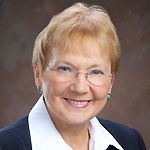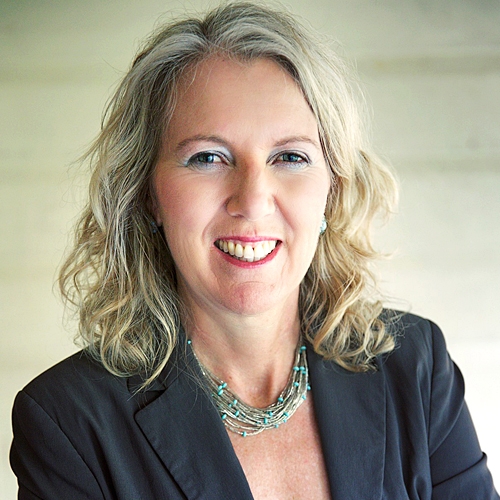 2013 Speakers & Topics
2013 Speakers & Topics
Anna Hoff is an Outreach Manager at the National Healthy Mothers, Healthy Babies Coalition. Her work is focused on integrating text4baby into California’s state perinatal health system. Previously she was a researcher at the National Latino Research Center (NLRC) at California State University, San Marcos. Her research and programmatic work was focused on mobile health innovation, disaster preparedness and addressing environmental and health disparities in migrant communities. She helped initiate the San Diego text4baby Coalition and conducted the implementation and evaluation of the text4baby program in San Diego County.
SMS messaging is an effective way to disseminate health and safety information to pregnant women and new moms as demonstrated by text4baby, the United States’ largest mobile health service. Text4baby is the nation’s only free mobile information service designed to promote maternal and child health through text messaging. This presentation will outline how text message content is developed in partnership with national, state, and local organizations as well as major medical organizations and the U.S. government. Evaluation methods and results will also be presented, including data on patient engagement and the effectiveness of text messages on appointment adherence, access to health services, increased health knowledge and increased confidence.
David J R Hutchon completed his M.B. at the University of Edinburgh, Scotland. After working 30 years in the specialty of Obstetrics and Gynaecology he started to understand the true effect of prematurely closing the placental circulation with a cord clamp. Over the past five years David has organized four conferences exclusively on this subject and many articles have been published reviewing this topic. Furthermore, David formed the team which developed the LifeStart Trolley for resuscitation with the cord intact at the mother’s side.
Separation of a baby from its mother, especially soon after birth, interferes with bonding and with successful breast feeding. Separation should only be carried out when absolutely necessary. One of these situations is thought to be when the baby fails to breathe soon after birth. The common current practice of early cord clamping allows the baby to be moved to the room-side resuscitation equipment without much thought. The failure to understand the true nature of transitional circulation at birth has undermined the appreciation of the harm of early cord clamping. Teaching of the physiology of transition at birth in the vast majority of textbooks is inaccurate by implying or stating that the placental circulation ceases with the birth of the baby. When transitional circulation is understood and it is realised that there is a continued circulation with oxygen and a redistribution of warm blood to the baby, the rationale for initiating resuscitation by the side of the mother without clamping or cutting the cord. This requires preparation and some innovative thinking. New equipment now makes this much easier.
Debbie received both her Bachelor and Master's of Science in Nursing from the University of Ottawa. She began her nursing career in the Neonatal Intensive Care Unit at the Children's Hospital of Eastern Ontario. In 2000, Debbie joined the regional outreach program as a neonatal expert and coordinates neonatal resuscitation and stabilization education within the region. Debbie facilitated the development of a regional guideline about woman abuse and was a member of the Registered Nurses' Association of Ontario's (RNAO) Best Practice Guideline expert panel that developed the guideline 'Woman Abuse: Screening, Identification and Initial Response'. Debbie managed two initiatives, funded by the Ontario Women's Directorate, to raise awareness about woman abuse in the perinatal period and worked collaboratively to develop online modules specific to the perinatal period.
Woman abuse is a significant health issue worldwide. Woman abuse in the perinatal period is also a significant issue worldwide – not only for women but for their unborn and newly born children. This presentation will provide the participant with information about the prevalence and health consequences of woman abuse in the perinatal period; discuss evidence-informed interventions and describe various tools and resources available for health care practitioners as they interface with women who are or may have experienced abuse.
Elizabeta Zisovska has worked for over 30 years in Neonatology/Perinatology, is currently Chief of the Neonatal Department at the Academic Obstetric and Genecology Clinic, Skopje, Macedonia and Professor of Pediatrics at the Faculty for Medical Sciences. She was actively involved in consultancy work with WHO/HQ in developing rational use of medicines in neonates, guidelines for essential newborn care, making pregnancy safer, and neonatal seizures. Her specific activities are in strengthening capacities for improving maternal and neonatal health, public health approach to the maternal and neonatal health, conducting systematic reviews, and running courses on practicing evidence based medicine. Elizabeta is also deeply involved in breastfeeding promotion and protection and the BFHI.
Pain is defined as “an unpleasant sensory and emotional experience associated with actual or potential tissue damage.” The interpretation of pain is subjective. Despite accumulating evidence that procedural pain experienced by newborns may have acute and even long-term detrimental effects on their outcome, pain control and prevention remain controversial, because the neonate's expression of pain does not fit within the definition due to the requirement for self-report. But, the neuroanatomical and neuroendocrine composition are sufficiently developed to allow transmission of painful stimuli in newborns. Therefore, concerns exist that pain is often unrecognized and undertreated. Several validated pain measures exist to assess acute pain in neonates. Behavioral and physiological indicators of pain can be used to assess and manage pain in neonates, and the most effective is prevention, limitation, or avoidance of noxious stimuli and providing analgesia, but some of the Guidelines may be vulnerable to inter-professional differences in guideline implementation.
Professor Mercer is the Principal Investigator, for Protective Effects of Delayed Cord Clamping in Very Low Birth Weight Infants study and Principal Investigator , for the Effects of Placental Transfusion on Early Brain Development study. Professor Judith Mercer D.N.Sc., C.N.M., F.A.C.N.M. Professor Emerita, University of Rhode Island, Rhode Island, USA.
Currently obstetrical practice in the United States is beginning to embrace the need to delay clamping of the infant's umbilical cord at birth to provide a placental transfusion. If the well baby needs his placental blood, what about the distressed infant needing resuscitation? This presentation offers the case for resuscitation with an intact cord. We review the basic neonatal transitional physiology and recent literature. How hypovolemia may lead to inflammation is discussed. New physiologic data shows how the placental transfusion increases blood flow to the brain, lungs and heart of the newborn which may benefit the infant needing resuscitation. Three cases are reviewed. Practical issues involved in implementing placental transfusion for the infant needing resuscitation are discussed. Lastly, ideas for changing practice are presented.
Dr. Kendall-Tackett is a health psychologist and International Board Certified Lactation Consultant, and the Owner and Editor-in-Chief of Praeclarus Press, a small press specializing in women's health. Dr. Kendall-Tackett is Editor-in-Chief of two peer-reviewed Clinical Lactation and Psychological Trauma. She is Fellow of the American Psychological Association in Health and Trauma Psychology, Past President of the APA Division of Trauma Psychology. Dr. Kendall-Tackett specializes in women's-health research including breastfeeding, depression, trauma, and health psychology. Her research interests include the psychoneuroimmunology of maternal depression and the lifetime health effects of trauma. Dr. Kendall-Tackett has authored more than 370 articles or chapters and is the author or editor of 24 books on maternal depression, family violence, and breastfeeding. Her most recent books include: Psychology of Trauma 101 (2015) and The Science of Mother-Infant Sleep (2014). Her websites are UppityScienceChick.com, BreastfeedingMadeSimple.com, KathleenKendall-Tackett.com, and PraeclarusPress.com. Google Scholar link: http://bit.ly/1nSwWIW
Topic: Causes and Consequences of Birth-Related Post Traumatic Stress Disorder (PTSD) - [View Abstract]
The negative effects of prenatal and postpartum depression, on both mother and baby, are too serious to ignore. Fortunately, there are a number of treatments for depression with empirically demonstrated efficacy, including a wide range of non-pharmacologic treatments. This session summarizes research findings on omega-3s, exercise, bright light therapy, cognitive and interpersonal psychotherapy, St. John’s wort, and antidepressant medications for both pregnant and postpartum women, balancing risks and benefits of each.
Recent studies have found that as many as 1 in 4 women have symptoms of post traumatic stress disorder (PTSD) following their births. What types of symptoms do they have and how do these symptoms impact breastfeeding and women’s emotional health? In this session, you will learn about the new DSM-5 criteria for PTSD and why some types of births are more likely to cause symptoms. You will also learn how these symptoms might impact breastfeeding, and what mothers and practitioners can do to help.
Kerstin Uvnäs Moberg got her MD and a PhD in Pharmacology at the Karolinska Institutet in Stockholm, Sweden. She has been employed as a full professor of Physiology at the University of Agriculture in Uppsala, Sweden. She has worked with research linked to the physiology of labor and breastfeeding for more than 30 years. The focus of the research has been on the role of oxytocin and sensory stimulation, in particular stimulation of cutaneous sensory nerves during labor, skin-to-skin contact after birth and breastfeeding. She has worked with animal experiments and also studies involving humans. She has studied the physiological mechanisms involved in birth and breastfeeding and also short and long term physiological and behavioral maternal adaptations induced during birth and breastfeeding.She is also working with the role of oxytocin during human animal interaction and in menopausal women.
Oxytocin, which is produced in the hypothalalmus, is released into the circulation from the posterior pituitary to induce uterine contractions and milk ejection during labor and breastfeeding. In addition oxytocin is released from oxytocin containing nerves, which project to important regulatory areas within the brain. In this way oxytocin, induces behavioral and physiological adaptations in the mother, which are consistent with motherhood. It facilitates and promotes interaction with the infant by e.g. reducing anxiety, by inducing calm and by increasing interaction with and bonding to the infant. It facilitates milk production by enhancing the release of prolactin, by inducing energy saving anti-stress effects such as lowering of blood pressure and cortisol levels. It also optimizes gastrointestinal function and metabolism to the needs of lactation. The expressions of these effects are promoted by skin-to-skin contact and by a familiar and supportive environment during birth and breastfeeding, but are blunted or even reversed into a negative effect patterns if the mothers feel unsafe or threatened. Some medical interventions during birth may also interfere with the development of the oxytocin linked adaptations.
Kirsten Small is an Obstetrician and Gynaecologist, with experience in both public and private hospital practice. She is currently teaching Anatomy, Physiology and Pharmacology in the Bachelor of Midwifery program at the School of Nursing and Midwifery, Griffith University, Queensland, Australia and works part time in a private midwifery group practice providing care to women with complicated pregnancy. Her professional interests include models of care that support woman centred continuity of midwifery care and sustainable health care practices in both Australia and Cambodia, where she regularly spends time as a volunteer.
Fossil fuels are a finite resource and evidence is mounting that we are about to enter a time where oil prices are going to increase astronomically. What challenges will this create for maternity care providers in both developed and developing countries? Examples of maternity care provision in Cambodia will be used, based on the speakers experiences from working there as a volunteer, to illustrate what delivering care in a resource poor setting might look like. A range of suggestions will be offered on how individuals and health care services can plan to build resilience into their systems to ensure that women and their children will still have access to quality care in a post-peak oil world.
Leslie Butterfield is a clinical psychologist specializing in perinatal and reproductive health concerns. For twenty five years she has maintained a clinical and consulting practice (Transition to Parenthood) providing psychotherapy and designing workshops and trainings for organizations that provide perinatal services. She has worked with organizations such as University of Washington Maternal and Infant Care Unit, La Leche League, Catholic Family Services, Attachment Parenting International, and PALS Doulas. Since 2010 she has been the Chairwoman of Postpartum Support International for Washington State and has recently assumed the Vice President position for PATTCh (an organization devoted to the Prevention and Treatment of Traumatic Childbirth). She has additionally been an instructor for the Seattle Midwifery School and the Department of Midwifery at Bastyr University for over a decade, developing and teaching a yearlong class in counseling skills for midwives.
PATTCh is a collective of birth and mental health experts dedicated to the prevention and treatment of traumatic childbirth. If a woman experiences or perceives that she and/or her baby were in danger of injury or death to during childbirth, her birth is defined as traumatic –psychologically, physically, or both. Usually, she experiences extreme sense of helplessness, isolation, lack of care, fear, and anxiety (Beck, 2004a). Traumatic childbirth occurs in as many as 18% of all births. Approximately one-third of those women may develop Posttraumatic Stress Disorder (PTSD). The PATTCh board members are a group of psychotherapists, childbirth educators, doulas, researchers, and academicians who are dedicated to bringing together like-minded individuals to educate childbearing women and families and maternity care professionals; develop effective prenatal, intrapartum and postpartum care practices to prevent or reduce traumatic birth and post-birth PTSD; and identify and promote effective treatments to enhance recovery.
Marcia is a Professor at the University of North Carolina- Chapel Hill. She has a joint appointment in the School of Nursing and the Carolina Center for Genome Sciences. She is Chair of the Family Health Division and Interim Chair of the Adult and Geriatric Health Division. She received a BS in Nursing from De Pauw University, a MS in Nursing from the University of Wisconsin –Milwaukee, a MA in Bioethics (with an emphasis on genetic issues) and a PhD in Nursing and Psychology from the University of Wisconsin- Madison. In 2012-2013 she was a Fulbright Scholar at University College Cork in Cork Ireland. Marcia was the first President of the International Family Nursing Association. She has an ongoing program of research on the family experience of living with genetic conditions. She is the PI of a cross-cultural study on adaptation and resilience in families of individuals with Down syndrome
Risk communication plays a critical role in decision making during the perinatal period. This presentation will provide the participant with an overview of common strategies used by health care professionals to discuss risk with parents during the perinatal period. It will also include a discussion of factors that are likely to influence parents’ perception of risk. Moreover, specific examples will be provided of risk discussions between parents and health care professionals (e.g., discussions of genetic risk and risk of negative outcomes related a procedure or surgery). Finally, tools and resources that can be used to enhance parents’ understanding of risks and benefits, as well as promote informed decision making during the perinatal period, will be discussed.
Although published in 1955, Friedman’s curve continues to govern routine labor management today. “Failure to progress,” a subjective diagnosis typically based on Friedman’s curve, is the cause of 35% of C-sections performed in first-time mothers. In this presentation, you will learn the history behind Friedman’s curve, the average time of cervical dilation in modern birthing women, and the newly proposed definitions of active labor and labor arrest. Strong evidence points to new recommendations that as long as mother and baby are both healthy and the length of labor does not meet the criteria of arrested labor, laboring women should be treated as if they are progressing normally. Importantly, six centimeters should be considered the start of the active phase—not four centimeters—and caregivers should keep in mind that normal early labor (before 6 cm) sometimes includes a period in which there is no change in dilation for hours.
Robin Grille is a psychologist in private practice and a parenting educator. His articles on parenting and child development have been widely published and translated around the world. Robin’s first book: ‘Parenting for a Peaceful World’ received international acclaim and led to speaking engagements around Australia, USA, UK, New Zealand and Canada. His second book, ‘Heart to Heart Parenting’ is now translated into Korean and German. Robin’s work is animated by his belief that humanity’s future is largely dependent on the way we collectively relate to our children. Robin’s experiential, skills-based and informational parenting courses have helped many people to embrace parenting as a transformative, personal growth journey. Drawing from 25 years’ clinical experience and from leading-edge neuropsychological research, Robin’s seminars and courses focus on healthy emotional development for children as well as parents; while building supportive, co-operative parenting communities.
From the third trimester in utero, through birth and the crucial bonding time that follows, our primal experiences mark us for life. Our moods, attitudes, relationship styles, our reactions under stress, even the functioning of our immune systems bear the imprint of how we were ushered into life. Our responses at this life-stage have the potential to immunize a child from a broad range of physical and mental disorders for life – or create long-term vulnerabilities.
Beyond informing parents, how can we help to imbue them with the emotional capacity for healthy attachment? How can we protect parents from parent-guilt, when sub-optimal attachment is unavoidable? What healing experiences can we provide when attachment does not go according to plan?
In this presentation, you will learn about emotional (implicit) memory of early life, and how it affects our behavior; primal health and the essence of healthy attachment; key supportive experiences that enhance parents’ capacity for attachment; how to provide information on healthy pregnancy, birth and attachment – while protecting parents from parent-guilt; and more!
Dr Sarah Buckley is a family physician (GP), trained in GP obstetrics, and mother of four homeborn children. She has been writing and lecturing to childbirth professionals and parents since 1997, and is the author of the internationally best-selling book Gentle Birth, Gentle Mothering, Sarah has a special interest in the hormonal physiology of labour and birth and in 2015 she completed an extensive scientific report on this topic, Hormonal Physiology of Childbearing, published with Childbirth Connection (US) in 2015. She is currently a PhD candidate is studying oxytocin and the autonomic nervous system in childbirth at the University of Queensland, Brisbane Australia.
The perinatal period is a pivotal time in development for mothers and babies, as well as being a time of exceptional evolutionary investment in mammalian survival. During labor and birth, Mother Nature provides an extraordinary hormonal cocktail that is designed to enhance survival, efficiency and reward for mothers and offspring, and also to optimize life-long wellbeing by optimizing breastfeeding and mother-baby attachment. In this lecture Dr Buckley describes Mother Nature’s superb design for mothers and babies, and the hormonal systems that contribute to life-long wellbeing for modern humans, as for our ancestors and our mammalian cousins. She also details the conditions needed to optimize this hormonal orchestration for mother and baby, and how maternity care professionals can support this system of physiologic birth. In addition, she discusses the importance of neonatal bacterial colonization, another pivotal event for life long wellbeing. Dr Buckley is the author of the up-coming report The Hormonal Physiology of Childbearing (Childbirth Connection, US) and her material is based on the best-available research evidence.
Dr. Conroy has worked with youth in various regions of Canada during her lifetime where she has lived and worked. She has a strong belief in their ability not only to envision a more hopeful future, but also to dream and make those dreams possible. She brought to fruition the S. Lake Cree First Nations project that brought youth together to photograph, draw pictures, and create putty sculptures about community people, subjects, objects, or events which made them happy or sad about living in their community. These projects were the model upon which subsequent research proposals are founded. It was with great pride and delight that she and the research team enabled the S. Lake youth – some of whom were gang members previously, skilled in producing graffiti that defaced S. Lake territory– to initiate and complete a wall mural in the local high school depicting social determinants of wellness in S. Lake. Before, during this project, and afterwards, Dr. Conroy has continued to build network connections with Albertan Indigenous people attracting very interested people to this project. She brought a research team together some of whom joined into a large SSHRC project. Her work as a paediatric nurse enabled her to understand the power of art forms for children and youth as a means of expressing their innermost feelings and values. She appreciates the value of various art forms and is a visual artist in her own right. Her doctoral work involved developing a method for interpretive phenomenology (IP) which was used by Drs. Cynthia Murray, Glenda Carson, and Hamilton Wilson. She successfully twinned IP and CB-PAR research methods and continues to supervise doctoral, masters, and undergraduate students.
Indigenous women hold these values high for living in their communities: Balance in everything; Respect for the Creator and all on Mother Earth; Traditions that have been passed down through generations for living the good life; Connection with and between communities and people; Relationships across generations; Community as the backdrop for all activities and relationships with obligations to the family; Spirituality expressed in appreciation of connectivity between all living beings and respect for traditions; and the idea of wholistic health and wellbeing with harmony being important. Strengths in the women help to overcome barriers to wellbeing such as those imposed by the Indian Act, low socio-economic circumstances, inequity, or poverty. Ideas for cooperation between Indigenous peoples and Western society are discussed. Solutions for equity and social justice are suggested.
Dr. Tim Moss is a physiologist specializing in perinatal development and preterm birth. Dr. Moss is part of The Ritchie Centre's Fetal, Neonatal, and Child Health Group. More than 20,000 Australian babies are born preterm (before 37 completed weeks of gestation) each year; many of these babies face life threatening illnesses which can result in long term disability. Infection or inflammation within the womb is common in pregnancies that end in preterm birth and is associated with many of the diseases faced by preterm infants. The goal of Dr. Moss's studies is to provide a basis for the intervention aimed at providing protection from the damaging effects of inflammation before birth.
Fifteen million babies are born preterm every year, with rates varying from 5 – 18% between different countries. Preterm birth is the leading cause of newborn mortality and is a major contributor to neonatal morbidity. Infection and/or inflammation are central to the aetiology of a majority of preterm babies’ risk of illness and death in the short term, and likely have life long influences on health. Our work has shown that the cardiovascular, respiratory, central nervous, and immune systems are all greatly altered by exposure to inflammation before birth. As we learn more about the consequences of infection/inflammation on development, we are realizing that vulnerability of preterm infants is not solely due to their immaturity at birth.
Vanessa Kelmis is a mother, certified birth doula, and Lieutenant in the United States Navy Reserve. She is a graduate of the US Naval Academy and served seven years active duty in the US Navy as a nuclear-trained Surface Warfare Officer. After leaving full-time military work, she became a birth doula dedicated to supporting military families throughout pregnancy and birth. She has joined mothers from military bases in the US and Japan, and is a passionate community advocate for labor support and breastfeeding. Vanessa lives in Yokosuka, Japan with her husband and son.
Pregnancy and birth for military families comes with a unique set of emotional and physical challenges. During a time when women seek stability and comfort, the nature of military work delivers a series of disruptions and uncertainty. Military mothers, both active duty women and spouses of military members, routinely go through the perinatal time far from their hometown, immediate family, and spouse. Pregnancy even early in the first trimester is often public for an active duty woman. Women in hazardous or frontline positions are transferred from their jobs, sometimes to different cities, and generally work in non-deployable positions up to birth. During the postpartum period, active duty women face the return to full-time work and a quick return to physical body weight and fitness standards. This session will discuss these challenges, cultural biases characteristic of the military, and how military parents may be better supported through pregnancy and birth.
Vanora Hundley is Professor of Midwifery at Bournemouth University. She is an internationally recognised midwifery researcher, having written over 70 peer-reviewed research articles on pregnancy, maternity care and midwifery. She has led a range of studies in the reproductive health field both in the UK and internationally. She conducted one of the first randomised controlled trials of midwife-led care, which forms part of the Cochrane review of birth settings. More recent work has examined the role of labour practices and their impact on maternal and neonatal outcomes, both in low income and high income countries. Passionate about research utilisation, Vanora is a Faculty Fellow at the Cochrane Collaboration College for Policy examining how best to disseminate Cochrane reviews. She believes that researchers must work closely with colleagues in both practice and education to ensure that research is relevant and that it is utilised.
The Media and Childbirth research team is a multidisciplinary group of researchers consisting of Vanora Hundley, Ann Luce, Marilyn Cash, Edwin van Teijlingen, Catherine Angell, and Helen Cheyne. This team of professors, lecturers, and research fellows representing Bournemouth University and the University of Stirling, is particularly interested in the role of the media in the rising rates of intervention in childbirth, the impact of the media on perceptions of breastfeeding, and the role of social media following childbirth bereavement in providing education and support. Considerable debate surrounds the influence that the media has on pregnant and birthing women; much of the academic literature discusses the influence of television, and reality television programs in particular, on how pregnant women engage with their pregnancy. It is suggested that women seek out these programs to add to their knowledge about childbirth because of a cultural void on this topic. We will explore what is known about the impact of media representation on mothers’ perceptions of labour and birth, and seek to answer the question: Does it matter how childbirth is portrayed?
 Dr. Speakers Full Name
Speaker Credentials
Dr. Speakers Full Name
Speaker Credentials
Annet Mulder first became interested in breastfeeding in the year 2000, when she became a mother for the first time. During and because of her own breastfeeding experiences, in 2002 she became a volunteer with the Dutch breastfeeding Organization and in 2008 sat for and passed the exam administered by the International Board of Lactation Consultant Examiners. As an International Board Certified Lactation Consultant, she now
Annet Mulder first became interested in breastfeeding in the year 2000, when she became a mother for the first time. During and because of her own breastfeeding experiences, in 2002 she became a volunteer with the Dutch breastfeeding Organization text text text text more name mulder first became interested in breastfeeding in the year 2000, when she became.
 Dr. Speakers Full Name
Speaker Credentials
Dr. Speakers Full Name
Speaker Credentials


























